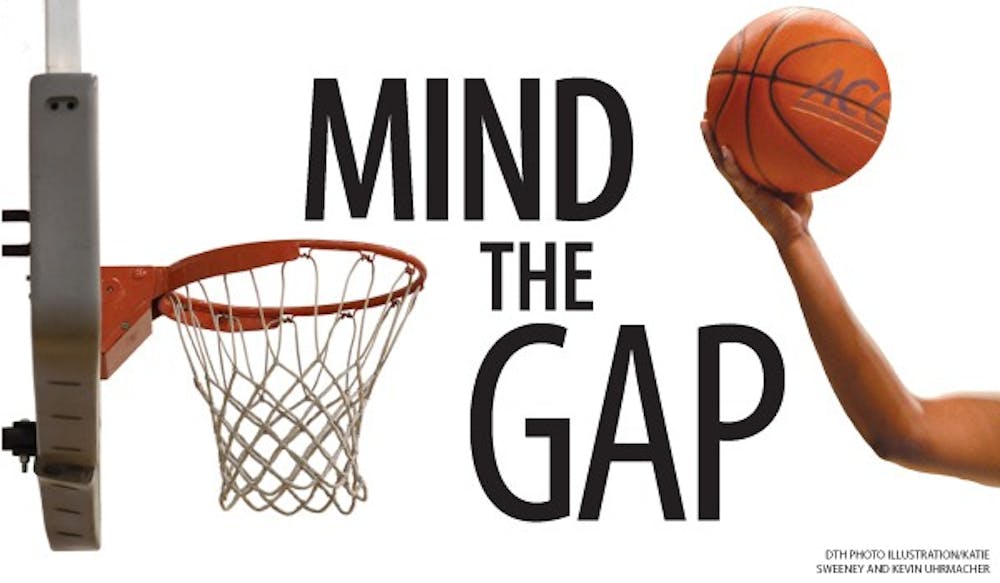The Atlantic Coast Conference and its member schools publicly take pride in modeling a healthy compromise between excellent athletics and academics.
But researchers at the College Sport Research Institute at UNC-Chapel Hill are wondering if student-athletes — at least the ones who turn a profit for their schools — are representative of that compromise.
The answer is no, according to the third annual Adjusted Graduation Gap report released Thursday by the institute. The report compares student-athletes’ graduation rates with those of their full-time peers.
Although its gap closed five percentage points from 2011, the ACC ranks last among the NCAA’s 30 Division I men’s basketball conferences, boasting the largest gap in graduation rates between players and the general full-time student body: 36 percentage points. The average is a gap of 20 percentage points.
For women’s players, the gap is considerably smaller, averaging 9.2 percentage points. Still, the ACC ranks 20th.
Woodrow Eckard, a professor of economics at the University of Colorado-Denver, developed the metric used in the report. He said the goal of the report was to create an apples-to-apples comparison of student-athletes to other full-time students.
“The purest comparison would be to compare athletes to full-time students with full-time jobs,” he said. “But how many full-time students do you know with full-time jobs?”
Other metrics of student-athletes’ academic performance fail to separate part-time student graduation rates from those of other full-time students, he said.
As a result, overall graduation rates used by the NCAA are brought down by part-time students, who take longer to graduate than their full-time peers. This oversight, Eckerd said, obscures the gap in graduation rates that his team’s report reveals.




